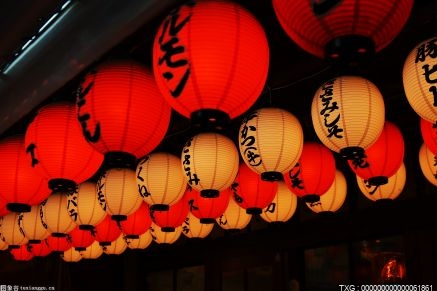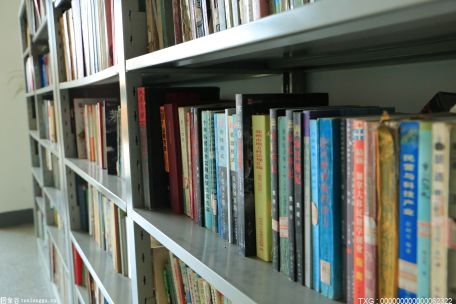
展览开幕▼
Opening ceremony
“从东到东”当代版画交流展——2021中国(宁波北仑)中东欧青年艺术周主题展览,6月11日于宁波北仑区文化馆艺术空间开幕。
"From East to East" Contemporary Printmaking Art Exchange Exhibition——Thematic Exhibition of 2021 China CEEC Youth Art Festival, was opening on June 11 in the Art Space of Ningbo Beilun Cultural Center.



中共宁波市北仑区委常委,宣传部部长龚国文致欢迎辞▲
Mr. Gong Guowen,Member of the Standing Committee of the CPC Ningbo Beilun District Committee,Minister of Publicity Department of Beilun District, welcome speech


策展人发言▲
The speeches of curators

策展人阿萨杜尔·马克洛夫现场导览▲
Exhibition guide of curator Assadour Markarov

策展人刘颖现场导览▲
Exhibition guide of curator Liu Ying

策展人与宁波中国港口博物馆副馆长陈卫立▲
The curator with China Port Museum Vice Director Chen Weili

策展人与艺术家俞启慧沟通▲
Discussion between curator and artist Yu Qihui.

艺术家俞启慧接受采访▲
Interview with the artist Yu Qihui

展览策划沟通▲
Exhibition process
展览前言▼
整个项目概念旨在展示国家、民族与人民间的联系,用一根无形的“线”连接不同的文化、社会和地区,通过丝绸之路这一脉络展示亚洲与中欧和东欧地区国家之间的文化联系。中东欧国家和中国之间存在一种无形的交流方式,它牵动着文化的融合,促进了人们的沟通,同时也认可和吸纳了新的思想。
来自不同地区的当代艺术家们,通过独特的艺术手段和方式,包括版画和艺术装置,在作品中展现了各自的文化特色和艺术风格,汇集在此次展览中,变为一幅世界图景。
“从东到东”展览通过创造一条交流之“链”,使得跨越国籍、身份、性别、年龄的观众,感受色彩和画面的视觉审美;在当代艺术世界中,感受相系的彼此。
当代版画作为一种艺术作品,对它的理解一直备受考验,因为艺术的界限正在不断被打破、跨越、模糊和融合。其历史令人兴奋,因为不久前,艺术家、理论家,尤其是艺术市场,还认为它是一门只为少数人保留的学科。这种认识与版画的历史渊源、传统技法和掌握程度有关,在 19世纪60年代之前都是被认可的,而波普艺术和摄影的出现使得版画领域中传统亲笔画法受到质疑,从而丝网印刷引入到了版画艺术的创作中。
在艺术界,版画有其独特而决定性的历史影响,自15世纪以来在视觉艺术领域一直占据着一席之地。早在文艺复兴时期,艺术家们就通过版画在世界范围内传播他们的思想和作品,版画的图像能够成倍印制,因而与人们建立了更广泛的联系。
据信在公元105年左右,中国可能已经有了一种最原始的印刷形式,称为拓印。为了记录和研究经文,人们把文字和圣像雕刻在平坦宽阔的石板上。之后诞生了雕版印刷,其原理是将湿纸压制成型,制成突出的阳文,涂上墨汁并附上纸张,轻拂纸背,字迹就显现出来了,这种把文字和图像结合起来的方法是印刷术的基础。丝网印刷工艺也起源于中国宋代的某个时期,然而它在 19 世纪才在西方艺术家手中成为一种流行的媒介。丝网印刷是一种技术,用一块网制版,利用刮板透过网孔转移油墨,形成图像。在1939年的纽约世界博览会上,它首次作为一种美术技法被引入到丝网版画中。
来自中国和中东欧的参展艺术家们,以及他们的一百多件纸质作品,在不断地追问艺术创作的概念,以及当代版画中技术、媒介、工艺和关联性的艺术特征。版画在中东欧国家本身就是一个特别的存在,展览通过聚焦这些国家更加展示了它的独一无二之处。中欧和东欧不论从文化还是地区分布上都是两个极为不同的空间,例如匈牙利,阿尔巴尼亚,罗马尼亚,拉脱维亚和保加利亚的文化渊源在种族之间并没有太多共通之处。虽然他们的语言和文化传统都是彼此分离的,但相同的文化经历将所有中欧和东欧国家团结在一起,这种地方问题也使他们与世界其他地区区分开来。通过这些艺术探索的实例,这场展览也展示了出对该地区的敏锐嗅觉,它可能会撼动版画的稳定地位,或至少可以促进版画在中东欧国家的重估。它将研究的范围拓展到地理区域,比当代版画通常的研究网络更为广阔,并提供了版画自诞生以来的一幅更为完整的发展图景。为了制作版画,艺术家们在金属、木头或其他材料上绘制,以此孕育新的图像。然而,随着当代艺术创作中数字技术的泛滥,我们看到了一种回归版画媒介最初原则和过程的趋势。参展的艺术家们都尊重了版画的基本原理,同时作品也反映出版画媒介和载体的发展如何激发和改变了艺术实践,为观众提供了一个鲜为人知的视角,来发觉版画中的机遇。本次展览的艺术作品从丝网版画到石版画,从木刻版画到四色版画,从原作版画到独幅版画,以及美柔汀、尘蚀版画和麻胶版画,应有尽有。
来自各个国家的参展艺术家们都是创新者,他们的创作实践不仅融合了自身的地理环境和文化传统,更吸收了国际潮流。如今,艺术家们更加专注于作品与质感、项目与定位、图像与留白、语境与媒介之间的关系。
“从东到东”国际版画交流展,以及致力于当代文化的各种节日和活动,相比艺术博览会而言,为评估当代版画领域的现状和脉搏提供了一个更好的平台,同时也为相关艺术理论的论述创造了良好的机遇。
阿萨杜尔·马克洛夫
杭州
2021 年 6 月
Preface▼
The idea and concept of the whole project is to show the links between nations and people,different cultures and societies and their cultural ‘threads’ linking and connecting one state to another. This exhibition has the intent to demonstrate the cultural links between Asia and countries from Central and Eastern European region through the Silk Road. There is an invisible way of communication from Central and Eastern European countries to China, which has had a huge impact on the integration of communication between people and cultures, which endorses new ideas.
Through a distinctive use of artistic techniques including printmaking and art installations contemporary artists from different countries and regions from Central and East Europe and China will show their own cultural characteristics and artistic style. All these gathered in this exhibition, become a linkage and map of the world.
The exhibition “From East to East” aims to create a ‘link’ of communication, enabling audiences across nationalities, identities, genders and ages to experience visual aesthetics of colors and images; to feel the connection with each other in the contemporary art world.
The understanding of contemporary printmaking as a production of art is generally constantly being tested, since the boundaries of art are being merged, crossed, blurred and erased in front of our eyes. The history of contemporary printmaking is quite exciting, as it is not long ago that it was considered by artists, theorists and most notably the art market, to be an alchemical discipline reserved for only a select few. Such treatment, linked to the historical origin of printmaking, its relation to traditional printmaking techniques and mastery, was legitimate up till about the 1960s, when it was put into question by the appearance of pop art and photography radicalized traditional autographic approaches to the field the introduction of screen-printing in the production of the printmaking as art.
Printmaking has a distinct and decisive history in the world of art, and has been in existence as a recognizable field of visual art since the fifteenth century. Formerly the Renaissance, prints have enabled artists to disseminate their ideas and works throughout the world, since the capacity of printing to produce multiplied images, established a communication with a wider circle of people. ?
It is believed that the Chinese may have produced a primitive form of print, called a rubbing, around 105 AD. To aide Chinese scholars in the study of their scriptures, texts and holy images were carved into large, flat stone slabs. After the designs were incised, damp paper was pressed and molded so the paper was held in the incised lines. Ink was applied and paper was removed. White lines appeared on a black background. This technique was the foundation of printing. This method of combining text and image is called block book printing. While the process of screen-printing originated also in China sometime during the Song Dynasty, screen - printing (serigraphy) became a popular medium for Western artists in the nineteenth century. Screen-printing is a technique that uses a woven mesh to support an ink-blocking stencil. The stencil forms open areas of mesh that transfer ink which then can be pressed through. A squeegee is moved across the screen stencil, forcing ink past the threads of the woven mesh in the open areas. It was introduced as a fine art technique for the first time with an exhibition of serigraphs at the New York World’s Fair in 1939.
The artists presented on the show, with the more than one hundred artworks on paper from both China and Central and Eastern Europe too are constantly inquiring about, not only the concepts of artistic creation, but also the characteristics of the techniques, mediums, processes and relations within the art of contemporary printmaking. By focusing on the countries in the Central and Eastern Europe, where printmaking has a distinctive presence, this show is unique. Central and Eastern European cultural space and as a region is extremely heterogeneous, the ethnic roots, for example of Hungarian, Albanian, Romanian, Latvian and Bulgarian cultures have not so much common between. Their languages and cultural traditions do not unite them, but separate from each other and only one thing, one cultural experience unites all Central and East European countries – the experience of local issues, which also differentiates them from the other world. This show also demonstrates alertness to a region that provides examples of art practice which has the capacity to destabilize, or at least prompt re-evaluation of assumptions of the printmaking held in East European countries. It casts the net of research across wider geographical areas than those usually accommodated in contemporary print studies and provides a more complete picture of printmaking as it has evolved since its beginning. To make a print, the artist draws on metal, wood or another material to create an image. This plate or block with the image on it is called the matrix. With the flood of the digital in contemporary art production, however, we are seeing a growing tendency towards a return to the original principles and processes of the printmaking medium. The artists represented all respect fundamental tenets of printmaking and the works shown on exhibition is a reflection on how the developments of media in printmaking have stimulated and changed the artistic practice, offers to viewers the opportunity to discover a lesser-known aspect of the artist’s work – printmaking. The artworks on the exhibition presents everything from screen-prints to lithographs, from woodcuts to four-color prints, from original prints to monoprints, mezzotint, aquatint and linocuts.
Artists selected for the exhibition from these countries are all innovators whose geographical circumstances and creative praxis drew on local traditions whilst absorbing international trends. Today, the artists in this exhibition pay more attention on quality, on project orientation, on space between the image and the void, the context and the medial function.
The international exchange printmaking exhibition “From East to East” and various festivals devoted to the contemporary culture are, much more so than fairs, the best place to evaluate the state and pulse within the field of contemporary printmaking, whilst also being a good opportunity for theoretical discourse on art. ?
Assadour Markarov
Hangzhou
June 2021
关于展览▼
About Exhibition
此次共有来自中国和10个中东欧国家的28位艺术家参加展览,共展出了82件版画作品。
In the whole exhibition was presented 28 artists from 11 countries from China and Central and Eastern Europe with 82 artworks.
参展艺术家▼
Artists represented
邵克萍、俞启慧、魏惠东、艾米利亚·佩苏、艾瑞娜·兹尼耶维奇、安卡·波艾利欧、安娜·维沃达、奥莱西亚·朱拉耶娃、奥维迪乌·克罗伊图鲁、巴特洛米·米哈尔斯基、布兰科·尼科洛夫、达沃·德米特罗维奇、德西斯拉娃·克里斯托娃、德西斯拉瓦·昂格、基里亚科斯·库苏利德斯、卡罗琳·科恩兹、罗森·托舍夫、玛丽加·马塞利奥尼特、尼科斯·吉塔基斯、帕沃尔·鲁斯科、帕维尔·塞尔科斯基、莎莎·潘西奇、斯蒂芬·博兹科夫、因加·希亚吉、约瑟夫·巴朱斯、瓦列里·查卡洛夫、佐兰·米西、玛丽亚·甘尼娃
Shao Keping \ Yu Qihui \ Wei Huidong \ Emilia Persu \ Irena Zieniewicz \ Аnca Boeriu \ Ana Vivoda \Olesya Dzhurayeva \Ukraine Ovidiu Croitoru \ Bartlomiej Michalsk \ Branko Nikolov \ Davor Dmitrovic \ Dessilava Hristova \ Desislava Unger \ Kyriakos Kousoulides \ Caroline Koenders \ Rossen Toshev \ Marija Marcelionyte \ Nikos Gyftakis \ Pavol Rusko \ Pavel Celkoski \ Sas?a Panc?ic \ Stefan Bojkov \ Inga Heama?gi \ Jozef Bajus \ Valery Chakalov \ Zoran Mishe \ Maria Ganeva
作品介绍▼
Artworks
邵克萍Shao Keping(中国China)▼

《鲁迅先生画像》
水印木刻
15.5 x 11 cm
1947年
Portrait of Mr. Lu Xun
Wood block print
15.5 x 11 cm
1947

《百舸争流宁波港》
水印木刻
30 x 56 cm
1979年
Hundred barges competing for Port of Ningbo
Wood block print
30 x 56 cm
1979
俞启慧Yu Qihui(中国China)▼

《力士与菩萨/瑰宝:Ⅲ》
水印彩拓版画
40 x 55 cm
1992年
Treasure III: Warrior and Bodhisattva
Watercolour woodblock print in ink and colour on paper
40 x 55 cm
1992

《多面佛像/瑰宝:Ⅱ》
水印彩拓版画
40 x 55 cm
1992年
Treasure II: The Multi-faced Guanyin
Watercolour woodblock print in ink and colour on paper
40 x 55 cm
魏惠东Wei Huidong(中国China)▼

《当庄子遇见当下》
水印综合版
72 x 142 cm
2018年
When Chuang Tzu meets the present
Water mixed print
72 x 142 cm
2018

《生命的枷锁》
版画
111 x 149 cm
The chains of life
Printmaking
111 x 149 cm
艾米利亚·佩苏Emilia Persu(罗马尼亚
Romania)▼

《印象01》
独版印刷
50 x 38 cm
2020年
Impression01
Monoprint
50 x 38 cm
2020
艾瑞娜·兹尼耶维奇Irena Zieniewicz(波兰Poland)▼

《他们称她为胜利》
丝网印刷
70 x 50 cm
They called her victory
Screen print
70 x 50 cm
安卡·波艾利欧Anca Boeriu(罗马尼亚Romania)▼

《爱和保护 1》
金属版印刷
40 x 30 cm
2020年
Love and protection 1
Metal print
40 x 30 cm
2020
安娜·维沃达Ana Vivoda(克罗地亚Croatia)▼

《清晨的碎片II》
干刻版画
99 x 92 cm
2019年
Fragments of morning II
Dry point, sugar lift
99 x 92 cm
2019
Olesya Dzhurayeva Ukraine奥莱西亚·朱拉耶娃(乌克兰Ukraine)▼

《把我的天空染成蓝色8》
麻胶版画
100 x 70 cm
Blue my sky 8
Linocut
100 x 70 cm
Ovidiu Croitoru奥维迪乌·克罗伊图鲁(罗马尼亚Romania)▼

《动物寓言01》
木刻
29 x 25 cm
bestiary 01
Woodcut
29 x 25 cm
巴特洛米·米哈尔斯基Bartlomiej Michalski(波兰Poland)▼

《圣柱循环》
麻胶版画
55 x 39.5 cm
Matzevah cycle
Linocut
55 x 39.5 cm
布兰科·尼科洛夫Branko Nikolov(塞尔维亚Serbia)▼

《反射 2》
数码印刷
100 x 70 cm
Reflections 2
Digital print
100 x 70 cm
达沃·德米特罗维奇Davor Dmitrovic(克罗地亚Croatia)▼

《你想如何被铭记》
数码版画
35 x 59 cm
How would you like to be remembered
digital
35 x 59 cm
德西斯拉娃·克里斯托娃Dessilava Hristova(保加利亚Bulgaria)▼

《可能的现实II》
丝网版画
125 x 70 cm
2015年
A possible reality II.
Silkscreen
125 x 70 cm
2015
德西斯拉瓦·昂格Desislava Unger (保加利亚Bulgaria)▼


《抵抗-存在 1》
木刻、日本纸
50 x 100 cm
2015年
Resistance -existence 1
Woodcut on Japanese paper
50 x 100 cm
2015
基里亚科斯·库苏利德斯Kyriacos Kousoulides (希腊Greece)▼

《“来自理想主义的回忆”系列四》
传统木刻、雕版、透明树脂
21 x 29.7 cm
"Memories From Idealism" Part 4
Traditional Woodcut, Engraving, Transparency Resin
21 x 29.7 cm
卡罗琳·科恩兹Caroline Koenders(希腊Greece)▼

《海-1》
综合版画,美柔汀、照片蚀刻、线蚀刻
75 x 45 cm
2012年
Thalassa-1
Mixed printing. Mezzotint, photo-etching and etching
75 x 45 cm
2012
罗森·托舍夫Rossen Toshev(保加利亚Bulgaria)▼

《船》
C-Print
33 x 56 cm
2021年
Boats
C-Print
33 x 56 cm
2021
玛丽加·马塞利奥尼特Marija Marcelionyte(立陶宛 Lithuania)▼

《证据3》
照相凹版
57 x 63 cm
2021年
Evidence 3
Photopolymer gravure
57 x 63 cm
2021
尼科斯·吉塔基斯Nikos Gyftakis(希腊Greece)▼

《我刚刚去冲浪了II》
石版画、铅笔、纸上标记、旧照片
46 x 66 cm
I just went surfing II.
Lithography, Pencil, marker on paper, old photograph
46 x 66 cm
帕沃尔·鲁斯科Pavol Rusko(斯洛伐克Slovakia)▼

《纪念品Ⅰ》
计算机版画
50 x 70 cm
2021年
Souvenir I.
computer graphic
50 x 70 cm
2021
帕维尔·塞尔科斯基Pavel Celkoski(马其顿Macedonia)▼

《男人和海》
干刻版画
70 x 100 cm
The man and the sea
Dry point
70 x 100 cm
莎莎·潘西奇Saša Pan?i?(塞尔维亚Serbia)▼

《姿态 Y》
丝网版画
50 x 35 cm
GEST Y
Screen printing
50 x 35 cm
斯蒂芬·博兹科夫Stefan Bozhkov(保加利亚Bulgaria)▼

《狩猎季开始II》
石版画
69 x 47.5 cm
THE HUNTING SEASON BEGINS II
Lithography
69 x 47.5 cm
因加·希亚吉Inga Heama?gi(爱沙尼亚Estonia)▼

《“愿我的祷告在你面前如香……(诗篇 141:2)”.I》
喷墨印刷
70 x 100 cm
2018年
“Let my prayer arise as incense before thee… (Psalm 141:2)”.I
Giclée Print
70 x 100 cm
2018
Jozef Bajus约瑟夫·巴朱斯(斯洛伐克Slovakia)▼

《辛克莱女孩系列#2》
丝网印刷、裁剪、综合媒介
70 x 50 cm
2021年
Sinclair Girls series #2
Silkscreen on paper, cutouts, Mixed media
70 x 50 cm
2021
瓦列里·查卡洛夫Valery Chakalov(保加利亚Bulgaria)▼

《病情记录III》
Collagraphy
50 x 70 cm
2016年
Record of the condition III
Collagraphy
50 x 70 cm
2016
佐兰·米舍Zoran Mishe(马其顿Macedonia)▼

《坚不可摧的精神图腾II》
线蚀版画
65 x 95 cm
2020年
Totem unbreakable spirit II
Ink on paper, Etching
65 x 95 cm
2020
玛丽亚·甘尼娃Maria Ganeva(保加利亚Bulgaria)▼



《我的号码 1》
丝网版画
70 x 50 cm
2016年
My number 1
Silk screen print
70 x 50 cm
2016
展览现场▼
Exhibition View



展览信息▼
The Exhibition
日期:2021.06.11-2021.06.25
地点:宁波北仑区文化馆艺术空间
Date:2021.06.11-2021.06.25
Site: Art Space of Ningbo Beilun Cultural Center
总策划:阿萨杜尔·马克洛夫
特邀策展人:刘颖
策展总助理:任喆
Chief Curator:Assadour Markarov
Invited Curator:Liu Ying
Assistant Curator:Ren Zhe
主办:宁波市文化广电旅游局 宁波市北仑区人民政府
承办:宁波市北仑区文化和广电旅游体育局
协办:宁波市北仑区文化馆 宁波中国港口博物馆 浙江森凡文化
Host:Ningbo Municipal Bureau of Culture, Radio, Television and Tourism
People's Government of Beilun District
Undertaker:Beilun Culture, Broadcast, TV, Tourism& Sports Bureau of Ningbo
Co-host:Ningbo Beilun Cultural Center
China Port Museum
Zhejiang Sevan Culture and Technology Co., Ltd.






